Novel Therapeutic Targets for Antiarrhythmic Drugs
Acknowledgments. Contributors. 1. Introduction ( George E. Billman ). 2. Myocardial K + Channels: Primary Determinants of Action Potential Repolarization ( Noriko Niwa and Jeanne Nerbonne ). 2.1 Introduction. 2.2 Action Potential Waveforms and Repolarizing K + Currents. 2.3 Functional Diversity of Repolarizing Myocardial K + Channels. 2.4 Molecular Diversity of K + Channel Subunits. 2.5 Molecular Determinants of Functional Cardiac I to Channels. 2.6 Molecular Determinants of Functional Cardiac I K Channels. 2.7 Molecular Determinants of Functional Cardiac Kir Channels. 2.8 Other Potassium Currents Contributing to Action Potential Repolarization. 3. The "Funny" Pacemaker Current ( Andrea Barbuti, Annalisa Bucchi, Mirko Baruscotti, and Dario DiFrancesco ). 3.1 Introduction: The Mechanism of Cardiac Pacemaking. 3.2 The "Funny" Current. 3.3 Molecular Determinants of the If Current. 3.4 Blockers of Funny Channels. 3.5 Genetics of HCN Channels. 3.6 HCN-Based Biological Pacemakers. 4. Arrhythmia Mechanisms in Ischemia and Infarction ( Ruben Coronel, Wen Dun, Penelope A. Boyden, and Jacques M.T. de Bakker ). 4.1 Introduction. 4.2 Arrhythmogenesis in Acute Myocardial Ischemia. 4.3 Arrhythmogenesis During the First Week Post MI. 4.4 Arrhythmia Mechanisms in Chronic Infarction. 5. Antiarrhythmic Drug Classification ( Cynthia A. Carnes ). 5.1 Introduction. 5.2 Sodium Channel Blockers. 5.3 Inhibitors of the Fast Sodium Current with Rapid Kinetics (Vaughan Williams Class Ib). 5.4 Inhibitors of the Fast Sodium Current with Slow Kinetics (Vaughan Williams Class Ic). 5.5 Inhibitors of Repolarizing K + Currents (Vaughan Williams Class III). 5.6 I Kur Blockers. 5.7 Inhibitors of Calcium Channels. 5.8 Inhibitors of Adrenergically-Modulated Electrophysiology. 5.9 Adenosine. 5.10 Digoxin. 5.11 Conclusions. 6. Repolarization Reserve and Proarrhythmic Risk ( Andras Varro ). 6.1 Definitions and Background. 6.2 The Major Players Contributing to Repolarization Reserve. 6.3 Mechanism of Arrhythmia Caused By Decreased Repolarization Reserve. 6.4 Clinical Significance of the Reduced Repolarization Reserve. 6.5 Repolarization Reserve as a Dynamically Changing Factor. 6.6 How to Measure the Repolarization Reserve. 6.7 Pharmacological Modulation of the Repolarization Reserve. 6.8 Conclusion. 7. Safety Challenges in the Development of Novel Antiarrhythmic Drugs ( Gary Gintant and Zhi Su ). 7.1 Introduction. 7.2 Review of Basic Functional Cardiac Electrophysiology. 7.3 Safety Pharmacology Perspectives on Developing Antiarrhythmic Drugs. 7.4 Proarrhythmic Effects of Ventricular Antiarrhythmic Drugs. 7.5 Avoiding Proarrhythmia with Atrial Antiarrhythmic Drugs. 8. Safety Pharmacology and Regulatory Issues in the Development of Antiarrhythmic Medications ( Armando Lagrutta and Joseph J. Salata ). 8.1 Introduction. 8.2 Basic Physiological Considerations. 8.3 Historical Considerations. 8.4 Opportunities for Antiarrhythmic Drug Development in the Present Regulatory Environment. 9. Ion Channel Remodeling and Arrhythmias ( Takeshi Aiba and Gordon F. Tomaselli ). 9.1 Introduction. 9.2 Molecular and Cellular Basis for Cardiac Excitability. 9.3 Heart Failure-Epidemiology and the Arrhythmia Connection. 9.4 K + Channel Remodeling in Heart Failure. 9.5 Ca 2+ Handling and Arrhythmia Risk. 9.6 Intracellular [Na + ] in HF. 9.7 Gap Junctions and Connexins. 9.8 Autonomic Signaling. 9.9 Calmodulin Kinase. 9.10 Conclusions. 10. Redox Modification of Ryanodine Receptors in Cardiac Arrhythmia and Failure: A Potential Therapeutic Target ( Andriy E. Belevych, Dmitry Terentyev, and Sandor Gyorke ). 10.1 Introduction. 10.2 Activation and Deactivation of Ryanodine Receptors During Normal Excitation-Contraction Coupling. 10.3 Defective Ryanodine Receptor Function is Linked to Proarrhythmic Delayed Afterdepolarizations and Calcium Alternans. 10.4 Genetic and Acquired Defects in Ryanodine Receptors. 10.5 Effects of Thiol-Modifying Agents on Ryanodine Receptors. 10.6 Reactive Oxygen Species Production and Oxidative Stress in Cardiac Disease. 10.7 Redox Modification of Ryanodine Receptors in Cardiac Arrhythmia and Heart Failure. 10.8 Therapeutic Potential of Normalizing Ryanodine Receptor Function. 11. Targeting Na + /Ca 2+ Exchange as an Antiarrhythmic Strategy ( Gudrun Antoons, Rik Willems, and Karin R. Sipido ). 11.1 Introduction. 11.2 Why Target NCX in Arrhythmias? 11.3 When Do We See Triggered Arrhythmias? 11.4 What Drugs are Available? 11.5 Experience with NCX Inhibitors. 11.6 Caveat-the Consequences on Ca 2+ Handling. 11.7 Need for More Development. 12. Calcium/Calmodulin-Dependent Protein Kinase II (CaMKII)-Modulation of Ion Currents and Potential Role for Arrhythmias ( Dr. Lars S. Maier ). 12.1 Introduction. 12.2 Evolving Role of Ca 2+ /CaMKII in the Heart. 12.3 Activation of CaMKII. 12.4 Role of CaMKII in ECC. 12.5 Role of CaMKII for Arrhythmias. 12.6 Summary. 13. Selective Targeting of Ventricular Potassium Channels for Arrhythmia Suppression: Feasible or Risible? ( Hugh Clements-Jewery and Michael Curtis ). 13.1 Introduction. 13.2 Effects of K + Channel Blockade on APD and Arrhythmogenesis. 13.3 Conclusions/Future Directions. 14. Cardiac Sarcolemmal ATP-sensitive Potassium Channel Antagonists: A Class of Drugs that May Selectively Target the Ischemic Myocardium ( George E. Billman ). 14.1 Introduction. 14.2 Effects of Myocardial Ischemia on Extracellular Potassium. 14.3 Effect of Extracellular Potassium on Ventricular Rhythm. 14.4 Effect of ATP-sensitive Potassium Channel Antagonists on Ventricular Arrhythmias. 14.5 Summary. 15. Mitochondrial Origin of Ischemia-Reperfusion Arrhythmias ( Brian O'Rourke, PHD ). 15.1 Introduction. 15.2 Mechanisms of Arrhythmias. 15.3 Ischemia-Reperfusion Arrhythmias. 15.4 Mitochondrial Criticality: The Root of Ischemia-Reperfusion Arrhythmias. 15.5 KATP Activation and Arrhythmias. 15.6 Metabolic Sinks and Reperfusion Arrhythmias. 15.7 Antioxidant Depletion. 15.8 Mitochondria as Therapeutic Targets. 16. Cardiac Gap Junctions: A New Target for New Antiarrhythmic Drugs: Gap Junction Modulators ( Anja Hagen and Stefan Dhein ). 16.1 Introduction. 16.2 The Development of Gap Junction Modulators and AAPs. 16.3 Molecular Mechanisms of Action of AAPs. 16.4 Antiarrhythmic Effects of AAPs. 16.5 Site- and Condition-Specific Effects of AAPs Effects in Ischemia or Simulated Ischemia. 16.6 Chemistry of AAPs. 16.7 Short Overview About Cardiac Gap Junctions. 16.8 Gap Junction Modulation as a New Antiarrhythmic Principle. 17. Novel Pharmacological Targets for the Management of Atrial Fibrillation ( Alexander Burashnikov and Charles Antzelevitch ). 17.1 Introduction. 17.2 Novel Ion Channel Targets for Atrial Fibrillation Treatment. 17.3 Upstream Therapy Targets for Atrial Fibrillation. 17.4 Gap Junction as Targets for AF Therapy. 17.5 Intracellular Calcium Handling and AF. 18. IKur, Ultra-rapid Delayed Rectifier Potassium Current: A Therapeutic Target for Atrial Arrhythmias ( Arun Sridhar and Cynthia A. Carnes ). 18.1 Introduction. 18.2 Molecular Biology of the K v 1.5 Channels. 18.3 IKur as a Therapeutic Target. 18.4 Organic Blockers of I Kur . 18.5 Conclusions. 19. Non-Pharmacologic Manipulation of the Autonomic Nervous System in Human for the Prevention of Life-Threatening Arrhythmias ( Peter J. Schwartz ). 19.1 Introduction. 19.2 Sympathetic Nervous System. 19.3 Parasympathetic Nervous System. 19.4 Conclusion. 20. Effects of Endurance Exercise Training on Cardiac Autonomic Regulation and Susceptibility to Sudden Cardiac Death: A Nonpharmacological Approach for the Prevention of Ventricular Fibrillation ( George E. Billman ). 20.1 Introduction. 20.2 Exercise and Susceptibility to Sudden Death. 20.3 Cardiac Autonomic Neural Activity and Sudden Cardiac Death. 20.4 b2-Adrenergic Receptor Activation and Susceptibility to VF. 20.5 Effect of Exercise Conditioning on Cardiac Autonomic Regulation. 20.6 Effect of Exercise Training on Myocyte Calcium Regulation. 20.7 Summary and Conclusions. 21. Dietary Omega-3 Fatty Acids as a Nonpharmacological Antiarrhythmic Intervention ( Barry London and J. Michael Frangiskakis ). 21.1 Introduction. 21.2 Fatty Acid Metabolism. 21.3 Cellular Mechanisms. 21.4 Animal Studies. 21.5 Clinical Studies. 21.6 Future Directions. References. General Index. Index of Drug and Chemical Names.
{{comment.content}}
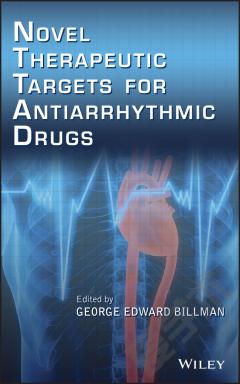

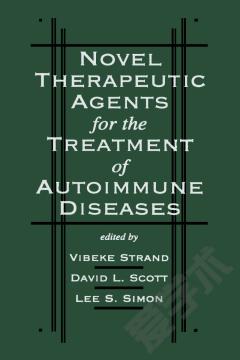

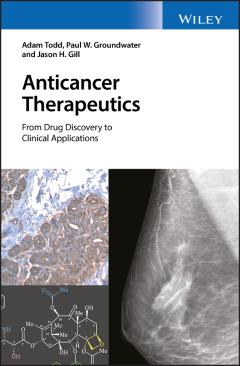
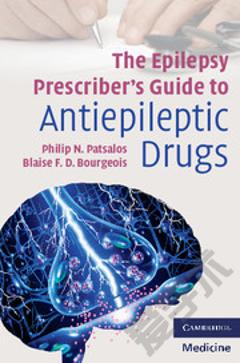
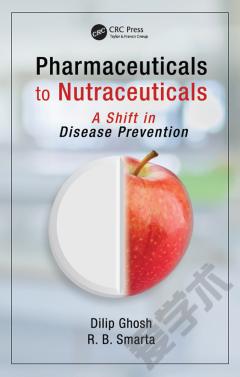

 京公网安备 11010802027623号
京公网安备 11010802027623号